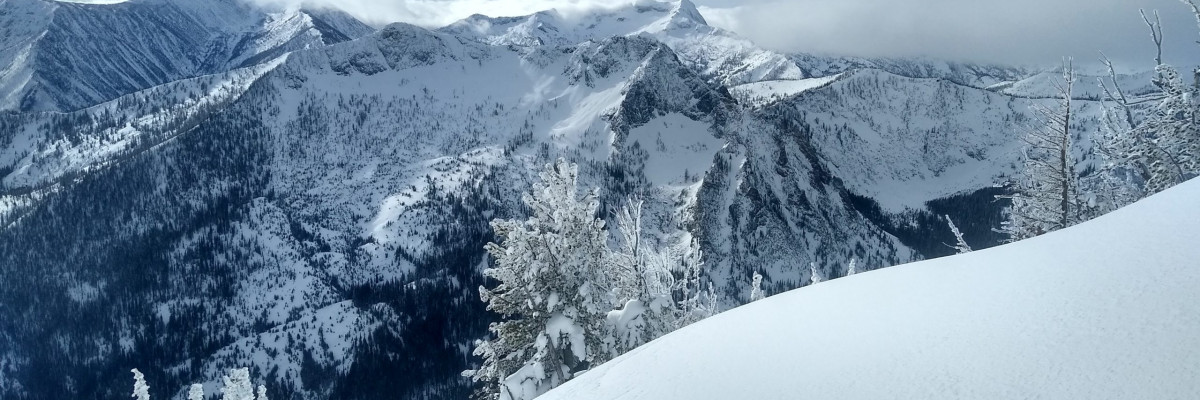The avalanche danger for the West Central Montana backcountry is MODERATE. Approach avalanche terrain with caution as triggering a large avalanche is possible.
Good morning, this is Todd Glew with the West Central Montana Avalanche Center’s avalanche advisory for January 30, 2020. This danger rating does not apply to operating ski areas, expires at midnight tonight, and is the sole responsibility of the U.S. Forest Service.
Weather and Snowpack
Mountain temperatures are currently in the upper teens to mid 20’s F. Winds picked up late yesterday and overnight and are gusting up to 50 mph on ridgetops, with wind chills currently below 0ºF. Overnight we picked up .2 inches of SWE in favored locations or up to 4 inches of snow.
Our primary concern is persistent slab avalanches. While this problem is becoming less of a concern, it is still ever-present. Snowpit results in thin areas (3 to 5 feet or less in depth) are still showing signs of propagation, failing near the ground on depth hoar and facets. Deeper areas (5 or more feet deep in depth) are not propagating. What this means is you are less likely to trigger an avalanche in terrain with a deep snowpack. The catch is that there are thin trigger points, buried just below the surface of the snow in deeper areas. If you decide to ski or ride in avalanche terrain you need to do your homework. Avoid likely trigger points, such as thin rocky areas, around cliff bands, in shallow snowpack areas, and on or near convexities in terrain 35 degrees or steeper. You need to dig pits and walk around with a probe poking for snow depths.
Our secondary concern is wind slab avalanches. With the recent increase of winds and easily transportable snow, wind drifts will be sensitive today. Wind drifts are easily identified by looking for bulbous or pillowy like features near ridgetops and on cross-loaded features.
Bottom line: Some years, it is safe to ski and ride many slopes, but this is not the year. Our main concern is weak faceted snow buried near the ground, which, if triggered, could take out the entire seasons snowpack. Don’t let the sunny skies today lure you into being complacent and making bad decisions.
Side note: On 01-28-2020, just outside our forecast area in the Flint Creek Range there was a 3-4 feet deep and 700 foot wide remotely triggered avalanche. The slide was on an east facing aspect at about 8000 feet in elevation which failed on basal facets below a crust at the ground. The snowpack in the Flint Creek Range is very similar to the snowpack in our forecast area.
Avalanche and Weather Outlook
Today will be a beautiful sunny day with mountain temperatures in the mid 20’s to high 30’s. Winds will be out of the WSW, averaging 10-14 MPH with gusts up to 31mph. Our nice sunny day is going to be short-lived, with a warm and windy storm moving in this evening, dropping a few inches of dense snow by Friday afternoon.
Expect the avalanche danger to rise later this week with warming temperatures and the chance of new snow and rain up to 6000 feet. If you are in the mountains and it is raining, its a good clue to head home because rain and snow do not mix well in regards to avalanches.
Any observations are appreciated. If you get out in the mountains, please send us your observations here. Thank you very much to those of you who have been sending in observations, as it is incredibly beneficial.
Ski and ride safe.
Education Opportunities:
Want to learn more about avalanches? We still have spaces available on Avalanche Courses throughout the winter. Take a look here for a full list of courses.














